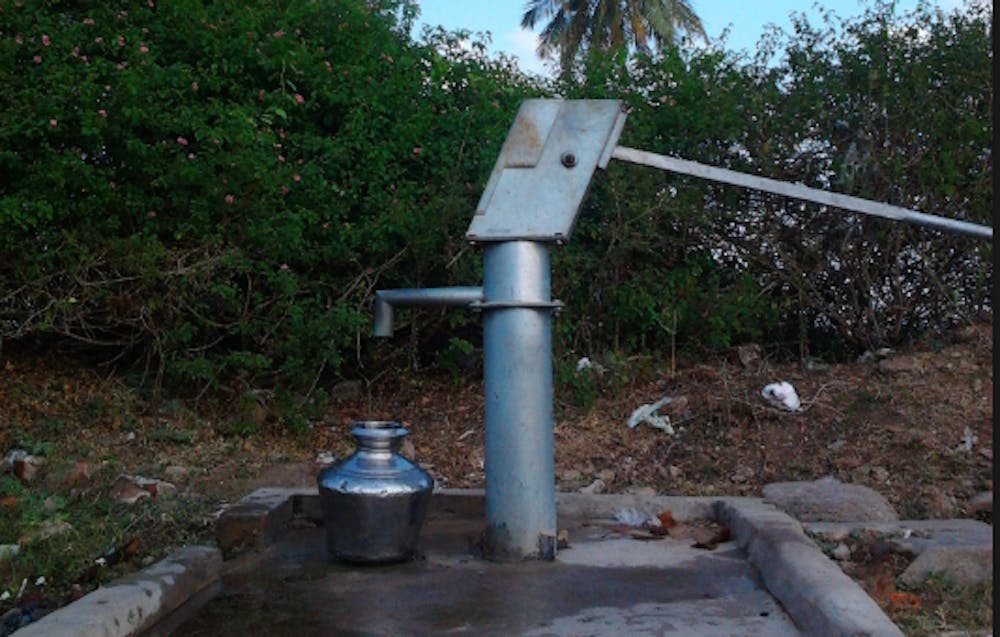Researchers at Duke recently discovered uranium contamination in groundwater from aquifers in 16 Indian states.
Concentrations of uranium above the World Health Organization’s standard of 30 micrograms per liter for safe drinking water were found in aquifers across the country. Exposure to high levels of uranium has been linked with risk for chronic kidney disease. The study was published in May.
“The implications are that millions of people are being exposed to uranium, and are at a higher risk for kidney disease,” said Avner Vengosh, professor of earth and ocean studies at the Nicholas School of the Environment. “Second, the government of India is not doing any monitoring of uranium in their annual water quality monitoring program.”
When considering uranium's danger, its radioactivity is usually what comes to mind. However, its properties as a heavy metal are actually the cause of its nephrotoxic effects.
High levels of uranium are largely due to natural uranium content in aquifer rocks, oxidation state and groundwater chemistry. Extreme bicarbonate levels were also found at the sites with high uranium levels.
“Bicarbonate you find in all kinds of natural waters. In the parts of India where we are seeing the uranium, however, it’s particularly high—extreme bicarbonate levels,” said Rachel Coyte, a Ph.D. student in earth and ocean sciences and lead author of the study. “That helps bring the uranium out of the source rocks.”
Human causes are also not to be ignored. Groundwater-table decline, nitrate pollution and over-exploitation of groundwater for agricultural irrigation further exacerbate uranium mobilization.
To uncover this issue of uranium contamination, researchers sampled and analyzed water from more than 300 wells in the states of Rajasthan and Gujarat. Researchers also examined similar data from previous studies of groundwater chemistry in these states and 14 more across the country.
The findings are the first to demonstrate the prevalence of uranium contamination in India’s groundwater, but uranium was not the only contaminant that researchers found.
“We found many other contaminants, but uranium is standing out because of the specific human health aspect associated with uranium,” Vengosh said.
High levels of nitrate, salinity, boron and fluoride were also found in the water tested.
“In fact in all the water that we studied in Rajasthan and Gujarat, none of the wells that are used for drinking water were suitable for drinking,” Vengosh said.
Although human activities may aggravate the issue of contamination, they can also help treat the issue.
“More sustainable agricultural practices could be one treatment,” Coyte said. “For a more concentrate, immediate fix, reverse osmosis systems will get rid of uranium. These are all solutions that the Indian government has used in the past and could be employed in these other areas. It is just going to take mobilization.”
Vengosh explained that tackling the issue requires a three-fold solution.
“First acknowledge that there is a problem. Without this we cannot do anything,” he said. “Second, better water management to provide people with water with less uranium and to maybe have some trade-off in terms of what water we should provide people. Third is actual remediation using technological solutions.”
There are challenges to addressing the issue, Vengosh cautioned—including India’s large population, especially in rural areas.
“The ability of many communities to actually treat the water is very limited,” he said. “There are easy technological solutions to this. The question is whether they have the means, the economic ability, to do that and the awareness to do that.”
Both Coyte and Vengosh highlighted a need for more research exploring the effects of uranium as a drinking water contaminant and its human health implications.
For Vengosh, the research not just a natural continuation of his work with the World Bank on water quality issues in India, but also fit into Duke’s interest in the country.
“India is one of the target countries that Duke is conducting research in,” Vengosh said. “[The research] merged well into the overall objective of international research at Duke.”
Correction: This article was updated to reflect the correct quotation by Coyte regarding reverse osmosis systems. The Chronicle regrets the error.
Get The Chronicle straight to your inbox
Signup for our weekly newsletter. Cancel at any time.

